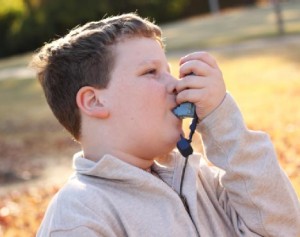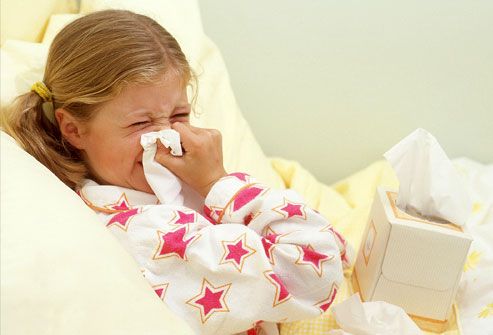This article details when parents should become concerned about a child's cough and cold.
Your baby’s cold is lasting 10 days. Your toddler’s earache persists all weekend. Your teenager’s cough lingers for weeks. When should you worry? That is to say, when should you really worry, going a step beyond generalized parental anxiety to actual, galvanizing concern? How long is too long?
A
paper recently out in the BMJ offers some welcome answers to that eternal question, and we’ve converted them into the simple bar chart. The lead author of the paper, Dr. Matthew Thompson, professor of family medicine at the University of Washington and researcher at Oxford, says he’d be happy to see it posted on many a fridge.
With one important proviso, however: Just because the duration of a child’s illness is within the expected range, that’s no reason to ignore other causes for concern. “If you’re still worried, if your child is getting sicker and sicker, and there’s something else going wrong — they’re not feeding well, having difficulty breathing, extremely high fever — you do need to take those things seriously,” Dr. Thompson said. “As parents, as doctors, we’re not just interested in duration of illness, we’re also interested in how severe the symptoms are.”
The biggest message is that people worry too soon.
Point taken. But now let’s talk about the millions of other cases in which parents bring their winter-virus-ridden children in to see the doctor purely because it seems like the sickness is dragging on for longer than it should. Having all these duration numbers in one place could help save some of that time, effort, and most of all, anxiety, Dr. Thompson says.
“When parents come in with their child to see a pediatrician or a family doctor, they’ve got two questions when their child has a cough or a cold or that kind of illness,” he said. “Number one is, how long is it going to last, doctor? And the second is, is there anything that is going to make it better? We really wanted to get more accurate information for that first question: how long will it last?”
Dr. Ben Kruskal, chief of infectious disease at Harvard Vanguard Medical Associates, notes that lowering parental anxiety could also help cut down the overuse of antibiotics, an important goal in this time of rising germ resistance.
“The biggest message is that people worry too soon,” he said, “and when people come into the office, they’re more likely to get treated with antibiotics that are almost invariably unnecessary in this setting. It’s not that there aren’t some genuine reasons to use antibiotics, but if you get 100 unnecessary visits, a few of them are going to generate unnecessary antibiotics. If you get 200 unnecessary visits, you’re going to get twice as many unnecessary antibiotics.”
The persistent cough is the source of the greatest gap between viral reality and parental expectations, both Dr. Kruskal and Dr. Thompson said.
“We found that cough lasts for 25 days in 90 percent of children, which is much, much longer than most parents would estimate,” Dr. Thompson said. “So it’s very, very common for us to see children being brought in for a cough that’s gone on for a week, or two weeks, but it’s not actually unexpected to see coughing symptoms going on for three weeks. It doesn’t mean the child’s got pneumonia, it doesn’t mean they’ve got asthma, it doesn’t mean there’s anything particularly wrong. It just takes a while for cough symptoms to get better.”
The paper’s finding on earache duration for nine out of 10 children — up to eight days — is also particularly worth highlighting, he said, because it is longer than previous CDC estimates and most parents’ expectations.
Do we really need this antibiotic or could we wait a few days?
Earaches generate a great deal of antibiotic use in children, and “clearly, there are some situations where ear infections do need an antibiotic,” Dr. Kruskal said. But “the take-home for parents might be, number one, don’t push for an antibiotic, and in fact, if a pediatrician is writing a prescription, ask, ‘Do we really need this or could we wait a few days?’”
The CDC and other health authorities offer “average duration” for many illnesses, but they can be confusing. From the BMJ paper:
For example, the 2008 National Institute for Health and Care Excellence guidelines for treatment of respiratory tract infections include estimates of average duration of the illness (before and after seeing a doctor) of four days for acute otitis media, one week for acute sore throat, one and a half weeks for the common cold, and three weeks for acute cough or bronchitis.
8 By contrast, information for patients from the US Centers for Disease Control and Prevention describe sore throat as lasting one to two weeks, common cold lasting up to two weeks, and cough duration ranging from two to eight weeks.
9 The durations quoted in these sources reflect findings based on expert opinion or from individual studies rather than from data synthesis of multiple studies and are not child specific.
The BMJ paper undertook a full-fledged, systematic review of existing scientific literature to determine how long respiratory-tract ailments last when untreated or treated only with symptom-relievers — over-the-counter medicines which temporarily make kids feel better but don’t affect the course of the illness.
The United-Kingdom-based research team combed through more than 10,000 papers and found about 50 papers that gave them information on about 2,500 children, Dr. Thompson said.
“This is the first time that we’ve been able to bring together all the studies which have looked at different kinds of respiratory infections in children,” he said, “so that we can present, all in one place, the expected length of illness for cough, cold, sore throat, ear infection and croup.”
The numbers should be disseminated widely among both clinical staff and the general public, said Dr. Kruskal, who was not involved with the paper.
But what about the frightening possibility that they might keep some parents from calling the doctor when they should?
“People are worried enough,” he said, “that even if we down-modulate things a bit, they’re still going to be more worried than they need to be.”










